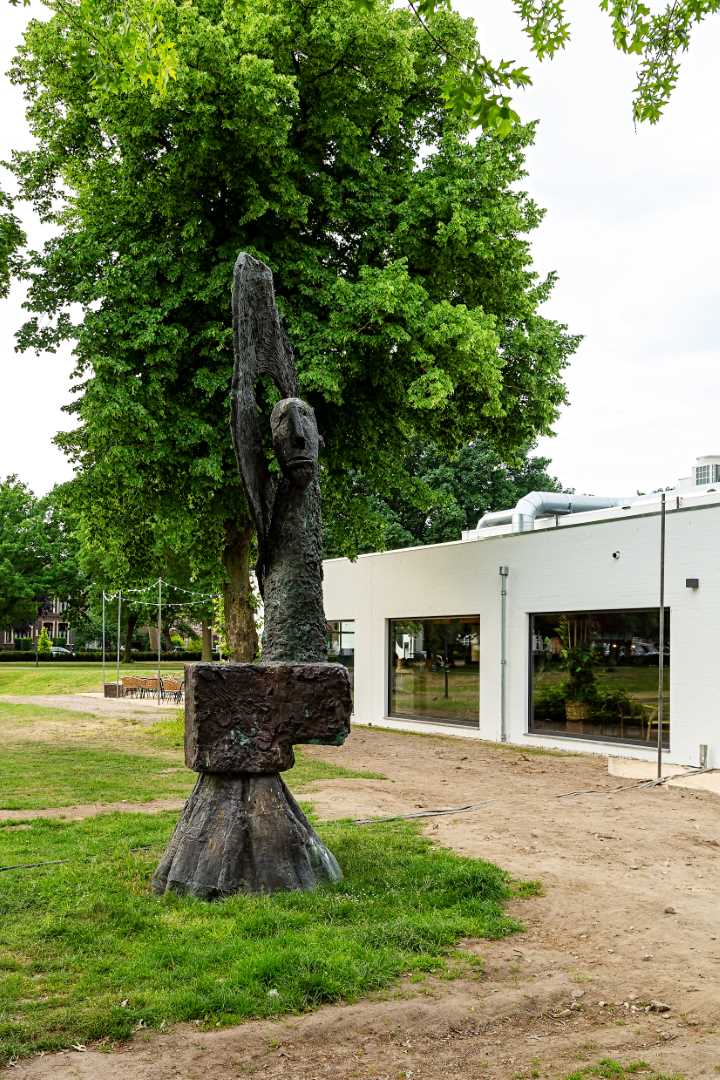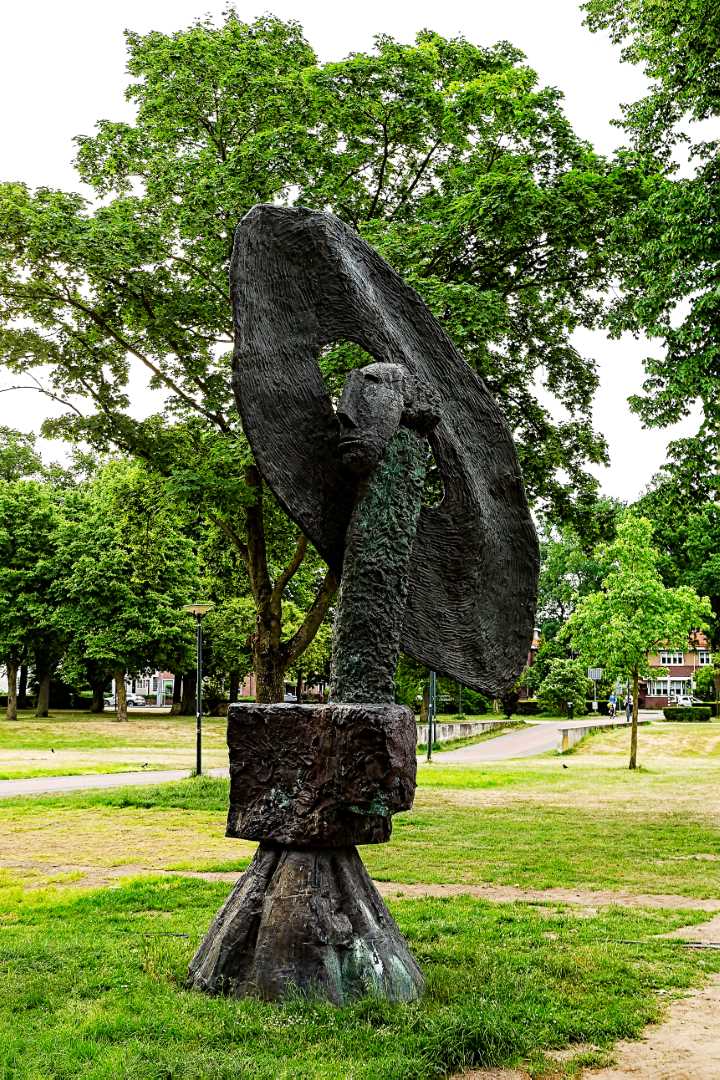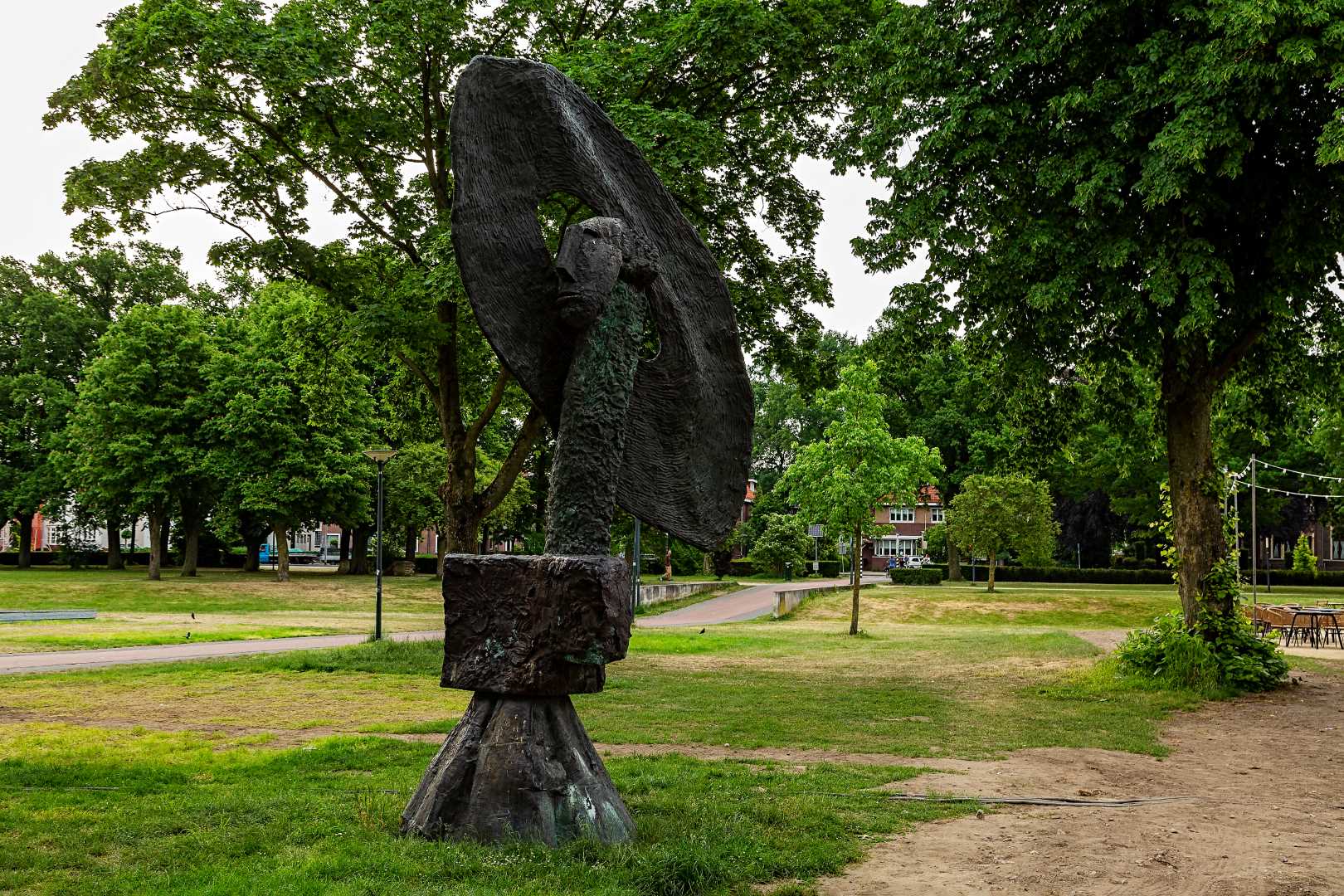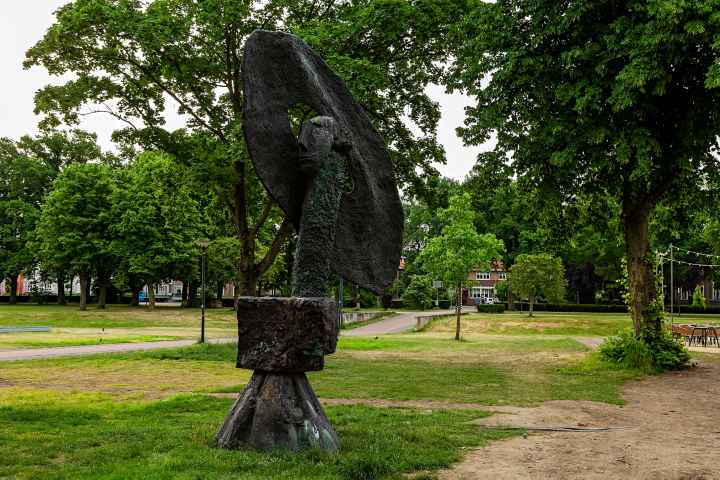The Muse
Juliana Park
The Muse – Han van Wetering
De Muze by Han van Wetering was placed in 1992 near what was then still Museum van Bommel van Dam. Unlike Tajiri’s De Knoop, De Muze did not move with the museum when it was given new premises in the former post office building a little further down the road.
Muses – nine in total – are Greek goddesses of the arts and sciences. They are mythological creatures, generally shown as particularly feminine and lovely. Van Wetering, in line with his style, has chosen a completely different form of depiction.
The artist: Han van Wetering
Johannes (Han) van Wetering was born in 1948 in Maastricht, where he is still active. In that city, he studied at the Stadsacademie and the Jan van Eyckacademie. He has had numerous exhibitions, mostly in the Netherlands. Since 2020, one of his sculptures – Sint Servaas beschut door Adelaar (1981), which can be found in Maastricht – has been part of the list of 100 Key Works in Public Space in the Netherlands from 1945 to the present.
This list provides an overview of the diversity of art in public spaces in our country. The reason for compiling this list was the 40th anniversary of the trade journal BK Informatie.
Van Wetering is seen as an imperturbable obstructionist who makes surrealistic works in which mockery is never far away.
The Juliana Park
A group of men playing petanque, young people playing, people lazing in the shade of a tree or sitting on a bench reading a book. As soon as the weather gets good, Julianapark is a place of meeting. For example, during the festivals that take place there in the summer months, such as the culinary event Lekker Venlo, dance event Stereo Sunday and the now famous Zomerparkfeest. The spot we now know as Julianapark, adjacent to Keulsepoort, is the spot where one of the four city gates in Venlo’s fortifications once stood.
Just outside the Keulsepoort, until the nineteenth century, was a location called the Elysian Fields. From 1875, it was the location of the shunting yard of the Köln-Mindener Bahn, an international railway connection between Hamburg and Paris with a stop in Venlo. Therefore, in that period, the road west of the park was called Hamburgersingel. After the war, it was changed to Deken van Oppensingel, after Dean Jules van Oppen, who died during the war as a resistance fighter in Camp Vught.
The people of Venlo also called the road Ponywaeg. There could be two explanations for this. In line of the road there used to be the Pope factory. The young ladies who worked there were the first in Venlo to have their hair cut in a Pony style. Another explanation could be that the hussars – stationed in Venlo between 1816 and 1913 – took their horses (Ponies) out on the Hamburgersingel.
In 1971, the Van Bommel van Dam Museum opened its doors in Julianapark, nowadays located in the former post office at the Keulsepoort. Since 2000, the Limburgs Museum has also been part of the park. After the departure of van Bommel van Dam, Foodhall MOUT settled in the drastically renovated museum building in 2022.
In Julianapark there are several works of art and also some parts of the former fortress walls, of which a part has been preserved underground.






